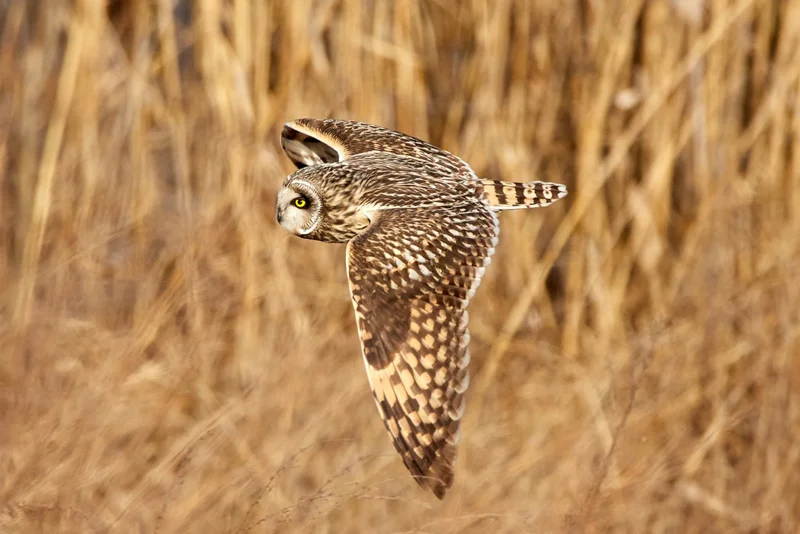![[feature] You probably already know that owls are usually active at night, and can turn their heads almost completely around; but here are some owl facts that’ll likely surprise you.](https://blogger.googleusercontent.com/img/b/R29vZ2xl/AVvXsEhG-3hH1oZSM8RuNEPzdivd1QzBlB28eOcL7QtXzfZ8uHzSKKoTLz-vBzOgLz_2_sHObxSSClA8zLKwnmthWussKaMNZqinwfOvyO_6zU5qGxwDAxsOGn82J87HbmAHIxsBRIkvALBUWWGR/s1600-rw/dearjulius.com.jpg)
From Animal Encyclopedia
There’s no one “owl”—in fact there are 250 different species of the birds, and they truly come in all different shapes and sizes, from 5 inches tall to nearly 3 feet.
But even the little ones are born predators with sharp talons and beaks they use to catch and eat small animals like insects, rodents, and reptiles.
You probably already know that owls are usually active at night, and can turn their heads almost completely around; but here are some owl facts that’ll likely surprise you.
There’s no one “owl”—in fact there are 250 different species of the birds, and they truly come in all different shapes and sizes, from 5 inches tall to nearly 3 feet.
But even the little ones are born predators with sharp talons and beaks they use to catch and eat small animals like insects, rodents, and reptiles.
You probably already know that owls are usually active at night, and can turn their heads almost completely around; but here are some owl facts that’ll likely surprise you.
Owls don’t have eyeballs, they have eye “tubes”

Eyeballs are round, right? Not always! Owls’ eye “balls” are actually shaped like long tubes, according to the National Geographic Society.
These eye tubes can’t move around like those of humans and many other animals—they’re held fast in place by bones called sclerotic rings.
Like these other nocturnal animals, owls have incredible eyesight and can see very well in the dark. But because they can’t move their eye “balls,” they must move their entire head to look around.
These eye tubes can’t move around like those of humans and many other animals—they’re held fast in place by bones called sclerotic rings.
Like these other nocturnal animals, owls have incredible eyesight and can see very well in the dark. But because they can’t move their eye “balls,” they must move their entire head to look around.
They swallow their food whole…

…and then barf up the bones, fur, and other indigestible parts later in tightly packed “owl pellets.”
These pellets can be as big as 4 inches long, depending on the size of the owl, according to the Seattle Audubon. These clumps are usually black and shiny when first brought up, then dry to a gray color.
These pellets can be as big as 4 inches long, depending on the size of the owl, according to the Seattle Audubon. These clumps are usually black and shiny when first brought up, then dry to a gray color.
They’re food-stashers, like squirrels

Owls swallow their prey whole, but when they don’t have the time to do it right away, they “cache” food animals like mice in tree branches, piles of rocks, or holes in trees, according to the Owl Research Institute.
Some owls eat mostly insects, while others like frogs, lizards, rodents, birds, and even skunks.
Some owls eat mostly insects, while others like frogs, lizards, rodents, birds, and even skunks.
A group of owls is a “parliament”

Different groups of animals are called different things: a “murder” of crows, a herd of cattle, a pod of whales. Anyone interested in owl facts should know this little tidbit: When it comes to owls, a group is called a “parliament.”
Not because a scientist declared it should be that way, but because that’s what novelist C.S. Lewis called a group of the birds in The Chronicles of Narnia. “A Parliament of Owls” is the title of Chapter 4 in the volume of the series called The Silver Chair.
Not because a scientist declared it should be that way, but because that’s what novelist C.S. Lewis called a group of the birds in The Chronicles of Narnia. “A Parliament of Owls” is the title of Chapter 4 in the volume of the series called The Silver Chair.
Some owls have mismatched ears

Some owls have tufts of feathers on their heads that look like the ears of a fox or cat—but those aren’t their ears. Owl ears are actually just slits on the sides of their heads, per the Owl Research Institute.
At the opening of the ear canal is a flap of skin called a conch, that the bird can open with small muscles around its face.
Many owls have asymmetrical ears located at different heights on each side of their head—this difference lets them better judge exactly where sounds are coming from.
At the opening of the ear canal is a flap of skin called a conch, that the bird can open with small muscles around its face.
Many owls have asymmetrical ears located at different heights on each side of their head—this difference lets them better judge exactly where sounds are coming from.
























